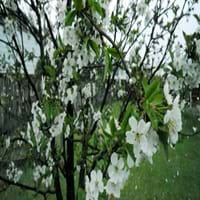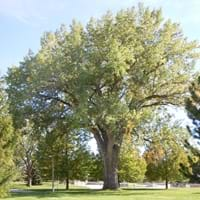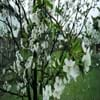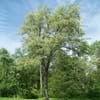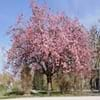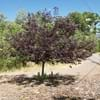Life Span
Perennial
Perennial
Origin
Western Asia
Northeastern United States, Mid-Atlantic United States, Southeastern United States, Central United States, Canada, Mexico
Types
Büttnera Czerwona, Hedelfinger Sweet Cherry
Plains Cottonwood, Rio Grande cottonwood
Habitat
Woodland Garden Canopy
bottomlands, Floodplain, Hardwood forests, Riverbanks
USDA Hardiness Zone
5-8
3-9
Sunset Zone
2a, 2b, 6, 7, 14, 15
1a, 1b, 2a, 2b, 3a, 3b, 4, 5, 6, 7, 8, 9, 10, 11, 14, 15, 16, 17, 18, 19, 20, 21
Habit
Upright/Erect
Upright/Erect
Flower Color
Not Available
Red, Green
Flower Color Modifier
Bicolor
Bicolor
Fruit Color
Not Available
White
Leaf Color in Spring
Not Available
Green, Gray
Leaf Color in Summer
Not Available
Green
Leaf Color in Fall
Not Available
Yellow
Leaf Color in Winter
Not Available
Not Available
Leaf Shape
broad, flat
Toothed curved and flat petiole
Plant Season
Spring, Summer, Fall
Summer, Fall
Sunlight
Full Sun, Partial Sun
Full Sun
Growth Rate
Medium
Very Fast
Type of Soil
Clay, Loam, Sand
Loam, Sand
The pH of Soil
Acidic, Neutral
Acidic, Neutral
Soil Drainage
Well drained
Average
Bloom Time
Spring
Early Spring
Tolerances
Not Available
Drought, Soil Compaction, Wet Site
Where to Plant?
Ground
Ground
How to Plant?
Semi-hardwood and hardwood cuttings
Seedlings, Stem Planting
Plant Maintenance
Medium
Low
Watering Requirements
Water 1 in. per week during the active growing period, Water more in summer
Keep ground moist, Requires regular watering, Requires watering in the growing season, Water daily during growing season, Water Deeply, Water more in summer
In Summer
Lots of watering
Ample Water
In Spring
Moderate
Ample Water
In Winter
Average Water
Average Water
Soil pH
Acidic, Neutral
Acidic, Neutral
Soil Type
Clay, Loam, Sand
Loam, Sand
Soil Drainage Capacity
Well drained
Average
Sun Exposure
Full Sun, Partial Sun
Full Sun
Pruning
Remove dead branches, Remove thin branches
Remove dead branches, Remove hanging branches
Fertilizers
A 10 pound bag of 16-4-8 fertilizer
fertilize in growing season, Nitrogen
Pests and Diseases
Aphids, Borers, Mites
Aphids, Borers, Caterpillars, Insects
Plant Tolerance
Drought
Drought, Soil Compaction, Wet Site
Flower Petal Number
Not Available
Not Available
Foliage Texture
Not Available
Medium
Foliage Sheen
Not Available
Glossy
Attracts
Birds, Flies
Not Available
Allergy
Mild Allergen, Vomiting
Hay fever, Headache, Runny nose, sneezing
Aesthetic Uses
Beautification, Used in parkland
Landscape Designing
Beauty Benefits
Anti-ageing, Good Cleanser, Good for skin, Promotes Healthy Hair
No Beauty Benefits
Environmental Uses
Air purification
Air purification, Forms dense stands, Prevent Soil Erosion, Shadow Tree, Shelter for wildlife, Wildlife, Windbreak
Medicinal Uses
Antitussive, Astringent, Diuretic, Tonic
Anodyne, Anthelmintic, anti-inflammatory, Febrifuge
Part of Plant Used
Fruits, Seeds
Inner Bark, Leaves, Seeds
Other Uses
Used for making green dye, Wood is used for making furniture
Biomass for fuel, Used as firewood, Used As Food
Used As Indoor Plant
No
No
Used As Outdoor Plant
Yes
Yes
Garden Design
Edible, Fruit / Fruit Tree, Shade Trees, Topiary / Bonsai / Espalier
Screening / Wind Break, Shade Trees
Botanical Name
PRUNUS avium
POPULUS deltoides
Common Name
Sweet Cherry
Eastern Cottonwood
In Hindi
मीठी चेरी
Eastern Cottonwood
In German
Süße Kirsche
Eastern Cottonwood
In French
Cerise sucrée
Cottonwood Orient
In Spanish
Cereza dulce
Cottonwood del Este
In Greek
γλυκό κεράσι
Ανατολική Cottonwood
In Portuguese
Cereja doce
Cottonwood Oriental
In Polish
Słodka Wiśnia
Eastern Cottonwood
In Latin
dulcis cerasus
Orientalium Poplar
Phylum
Magnoliophyta
Anthophyta
Class
Magnoliopsida
Dicotyledonae
Family
Rosaceae
Salicaceae
Clade
Angiosperms, Eudicots, Rosids
Angiosperms, Eudicots, Rosids
Tribe
Amygdaleae
Not Available
Subfamily
Amygdaloideae
Salicoideae
Number of Species
Not Available
Importance of Sweet Cherry and Eastern Cottonwood
Want to have the most appropriate plant for your garden? You might want to know the importance of Sweet Cherry and Eastern Cottonwood. Basically, these two plants vary in many aspects. Compare Sweet Cherry and Eastern Cottonwood as they differ in many characteristics such as their life, care, benefits, facts, etc. Every gardener must at least have the slightest clue about the plants he wants to plant in his garden. Compare their benefits, which differ in many ways like facts and uses. The medicinal use of Sweet Cherry is Antitussive, Astringent, Diuretic and Tonic whereas of Eastern Cottonwood is Anodyne, Anthelmintic, anti-inflammatory and Febrifuge. Sweet Cherry has beauty benefits as follows: Anti-ageing, Good Cleanser, Good for skin and Promotes Healthy Hair while Eastern Cottonwood has beauty benefits as follows: Anti-ageing, Good Cleanser, Good for skin and Promotes Healthy Hair.
Compare Facts of Sweet Cherry vs Eastern Cottonwood
How to choose the best garden plant for your garden depending upon its facts? Here garden plant comparison will help you to solve this query. Compare the facts of Sweet Cherry vs Eastern Cottonwood and know which one to choose. As garden plants have benefits and other uses, allergy is also a major drawback of plants for some people. Allergic reactions of Sweet Cherry are Mild Allergen and Vomiting whereas of Eastern Cottonwood have Hay fever, Headache, Runny nose and sneezing respectively. Having a fruit bearing plant in your garden can be a plus point of your garden. Sweet Cherry has showy fruits and Eastern Cottonwood has no showy fruits. Also Sweet Cherry is not flowering and Eastern Cottonwood is not flowering . You can compare Sweet Cherry and Eastern Cottonwood facts and facts of other plants too.
